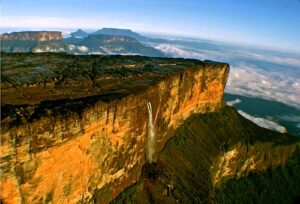An international team of scientists representing a number of disciplines locate bizarre materials and ET impact markers in a distinct layer of well-dated sediments from the initiation of the Younger Dryas and publish their findings in a major scientific journal. 2007 Firestone et.al. in PNAS?
Nope. W.C. Mahaney et. al. Geomorphology — March 2010.
In a total surprise to me (and I think the YD team) a new group has emerged and published findings which are strongly supportive of the YDB hypothesis. They aren’t the first independent party to complement the YDB team’s findings — but they appear to be the best. It is a very well written paper and includes a number of new discoveries — including Shocked Quartz (Planer Deformation Features), which are diagnostic of impact.
The Tusk will read, re-read and read once more in hopes of elaborating further this evening.
Venezuela
Evidence from the northwestern Venezuelan Andes for extraterrestrial impact: The black mat enigmaGeomorphology Volume 116, Issues 1-2, 15 March 2010, Pages 48-57A carbon-rich black layer encrusted on a sandy pebbly bed of outwash in the northern Venezuelan Andes,previously considered the result of an alpine grass fire, is now recognized as a ‘black mat’ candidate correlative with ClovisAge sites inNorth America, falling within the range of ‘blackmat’ dated sites (~12.9 ka cal BP). As such,the bed at site MUM7B, which dates to <11.8 ka 14C years BP (raw dates) and appears to be contemporaneous with the Younger Dryas (YD) cooling event, marks a possibly much more extensive occurrence than previously identified. No fossils (megafauna) or tool assemblages were observed at this newly identified candidate site (3800 a.m.s.l.), as in the case of the North American sites. Here, evidence is presented for an extraterrestrial impact event at ~12.9 ka. The impact-related Andean bed, located ~20 cmabove 13.7–13.3 ka cal BP alluvial and glaciolacustrine deposits, falls within the sediment characteristics and age range of ‘black mat’ dated sites (~12.9 ka cal BP) in North America. Site sediment characteristics include: carbon, glassy spherules, magnetic microspherules, carbon mat ‘welded’ onto coarse granular material, occasional presence of platinum group metals (Rh and Ru), planar deformation features (pdfs) in fine silt-size fragmental grains of quartz, as well as orthoclase, and monazite (with an abundance of Rare Earth Elements—REEs). If the candidate site is ‘black mat’, correlative with the ‘black mat’ sites of North America, such an extensive occurrence may support the hypothesized airburst/impact over the Laurentide Glacier, which led to a reversal of Allerød warming and the onset of YD cooling and readvance of glaciers. While this finding does not confirm such, it merits further investigation,which includes the reconnaissance for additional sites in South America. Furthermore, if confirmed, such an extensive occurrence may corroborate an impact origin.


